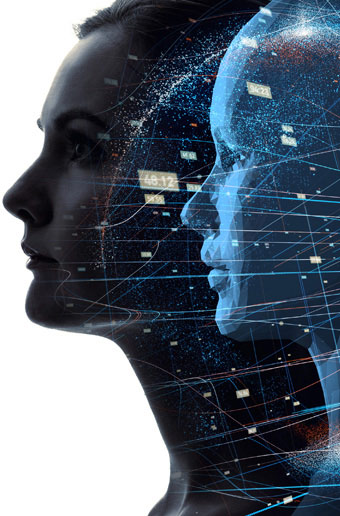In the controversial novel ‘My Sister’s Keeper’, parents conceive a ‘saviour sibling’ for the sole purpose of producing compatible organs and blood that will save their firstborn from a fatal disease. However disturbing this may sound, our cities are sick – very sick. Under strain from urbanisation, pollution, climate challenges and poor governance, could a ‘saviour sibling’ be a remedy for our sick cities? Could an ill, dysfunctional city be ‘treated’ through the creation of a ‘digital twin’ as a test bed to prototype urban ideas in a low-risk environment?
Testing the twin
A digital twin is a virtual model of a city; a digital model of the physical world. Digital twins can be developed for a range of ‘applications’ such as products, buildings, a process, factories, cities, and even people. But the real value lies in the potential of a digital twin to save its real-life ‘sibling’.
If we created a ‘digital twin’ of our existing cities, could we contemplate ways to improve them; apply those improvements in the digital version and then track the responses?
The opportunity would then exist, of course, to carry these lessons over to ‘real world’ applications so that our reality would be made more resilient, more responsive, and less exposed to physical, social and economic challenges?
The birth of digital twins is on the increase…
 Digital twin technology was ranked Number 5 in Gartner’s Top 10 Strategic Technology Trends for 2018, with predictions that billions of things will have digital twins in the next few years. NASA was using digital twin technology for decades before the term ‘digital twin’ was coined.
Digital twin technology was ranked Number 5 in Gartner’s Top 10 Strategic Technology Trends for 2018, with predictions that billions of things will have digital twins in the next few years. NASA was using digital twin technology for decades before the term ‘digital twin’ was coined.
They use virtual models to develop and maintain systems they can’t physically monitor in space, including running complex simulations of spacecraft responses. What it offers are dynamic, rapid, low-risk, real-time diagnostic and problem-solving capabilities.
Driving the growing application of the digital twin concept in cities will be an enormous number of interconnected Internet of Things devices with real-time, cost-effective data feeds.
A surprising number of everyday devices are already connected to the internet – including digital assistants such as Siri, Amazon Echo and Google Home.
You can digitally connect to your home heating, your car, your front door, your fridge… and your heart. These all provide a ready database of cause-and-effect responses which are the foundations for the development of a representative digital twin. An environment is fast emerging that will enable digital twins to flourish, connecting the physical to the digital world in ways previously unprecedented; not only device-to-device, but the physical world to the digital one.
Singapore’s digital twin is due in June 2018
Under development in Singapore right now is a digital twin called ‘Virtual Singapore’. Virtual Singapore is described by technology partner Dassault Systèmes as “the world’s first digital twin of an existing city state and will provide Singaporeans with an effective way to engage in the digital economy. It will be both a collaboration platform for city departments and businesses and a communication platform between the city and its citizens.”
The digital twin differs from other modelling approaches in that it can be designed to monitor and model multiple elements and the interactions between each – elements such as population density, transport, water, weather, energy transmission, energy consumption, waste management, security, people movements, and consumer purchasing… all manner of activity in a city.
Our cities can be reimagined by changing variables and understanding the impact. A virtual twin will help urban planners and policymakers visualise the responses from various sensor networks and intelligent systems deployed now and in the future – and they will use them to make informed decisions, using the twin environment as a test bed for innovative urban ideas.
Sibling rivalry
The power of a digital twin city will be in how it strategically uses technologies like the Internet of Things, Artificial Intelligence (AI) and Big Data. Feeding the sibling will be multiple streams of data, both historical and in real time.
Those cities that are able to leverage this technology and harness the benefits will be the communities and cities that prosper – they will become more environmentally, economically and socially sustainable.
But are we really ready? The sibling could well become an intelligent counterpart – trying to compete or to even make decisions for us. And, as with all ‘operating rooms’ where we monitor, diagnose and treat the sick – we’ll need skilled doctors. Will they be real or virtual? And, are we ready for them to alter the DNA of our cities… what ethical framework will these doctors use?
Enabling these ‘digital twins’ will involve the labour pains of ensuring our governance, as well as ethical structures, are ‘birth-ready’. There’s also the question of “Who owns the data?” – the government, the private sector, the digital twin platform, the autonomous vehicle that creates the data, or the citizen who is feeding data into the twin model?
It will also be crucial to ensure the accelerating pace of technology does not move faster than our ability to understand the consequences and plan how best to use digital twins for the benefit of all. If we can do that, we may just be able to create our own ‘saviour city’.
This blog was authored by: Matt Coetzee and Jacob Lindsay





